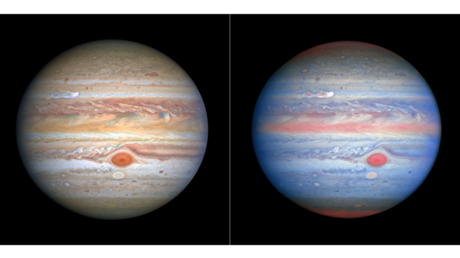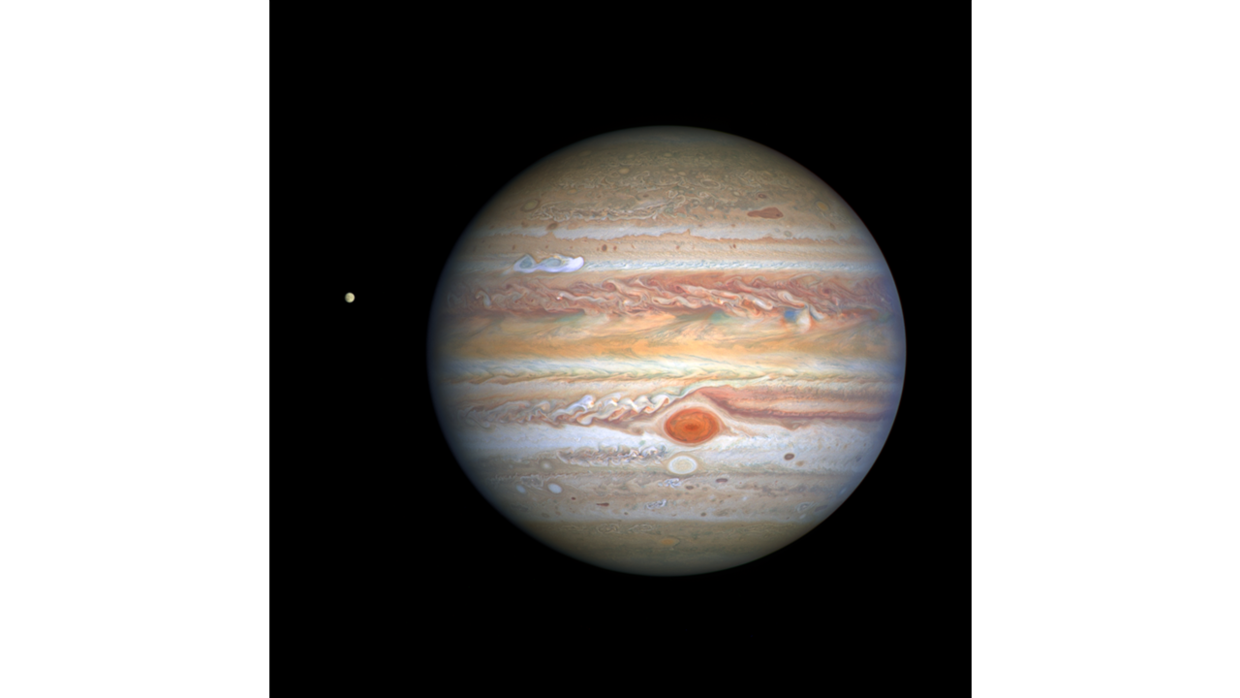
As Jupiter approaches Earth, the Hubble Space Telescope was able to snap new high-resolution photos of the solar system’s largest planet, revealing a brand new storm in its northern latitudes and a spinoff of the Great Red Spot.
Released on Thursday by NASA, the newest images from Hubble show Jupiter and its icy moon Europa on August 25, when the planet was 656 million kilometers (406 million miles) from Earth. The photo reveals a new feature in the gas giant’s hydrogen-helium atmosphere, a bright white storm stretching out across the mid-northern latitudes.
The new storm appeared on August 18, NASA said. It is moving at approximately 560 kilometers (350 miles) per hour. Two more storms were later detected along the same latitude by ground-based telescopes.

© NASA
The most notable feature of Jupiter’s atmosphere, the mega-storm dubbed the Great Red Spot, continues to shrink in size – as it has done since the 1930s – for reasons that remain unexplained. It is still larger than the entire Earth, at over 15,000 kilometers (9,800 miles) across.
Just below the Great Red Spot is the feature known as Oval BA, which NASA astronomers had dubbed “Red Spot Junior,” as it appeared red in 2006. It has since faded to white, but new photos show its core darkening and possibly returning to a more reddish hue.
The Jupiter photos were taken as part of the yearly mapping project under the Outer Planets Atmospheres Legacy (OPAL) program. Launched into low-Earth orbit in 1990, the Hubble Space Telescope is a joint project between NASA and the European Space Agency (ESA).
Earlier this week, devices located in Chile and Hawaii detected phosphine gas in the clouds above Venus. The toxic gas is considered a “biosignature” that may indicate the presence of life on the planet long considered to be uninhabitable.
Like this story? Share it with a friend!




